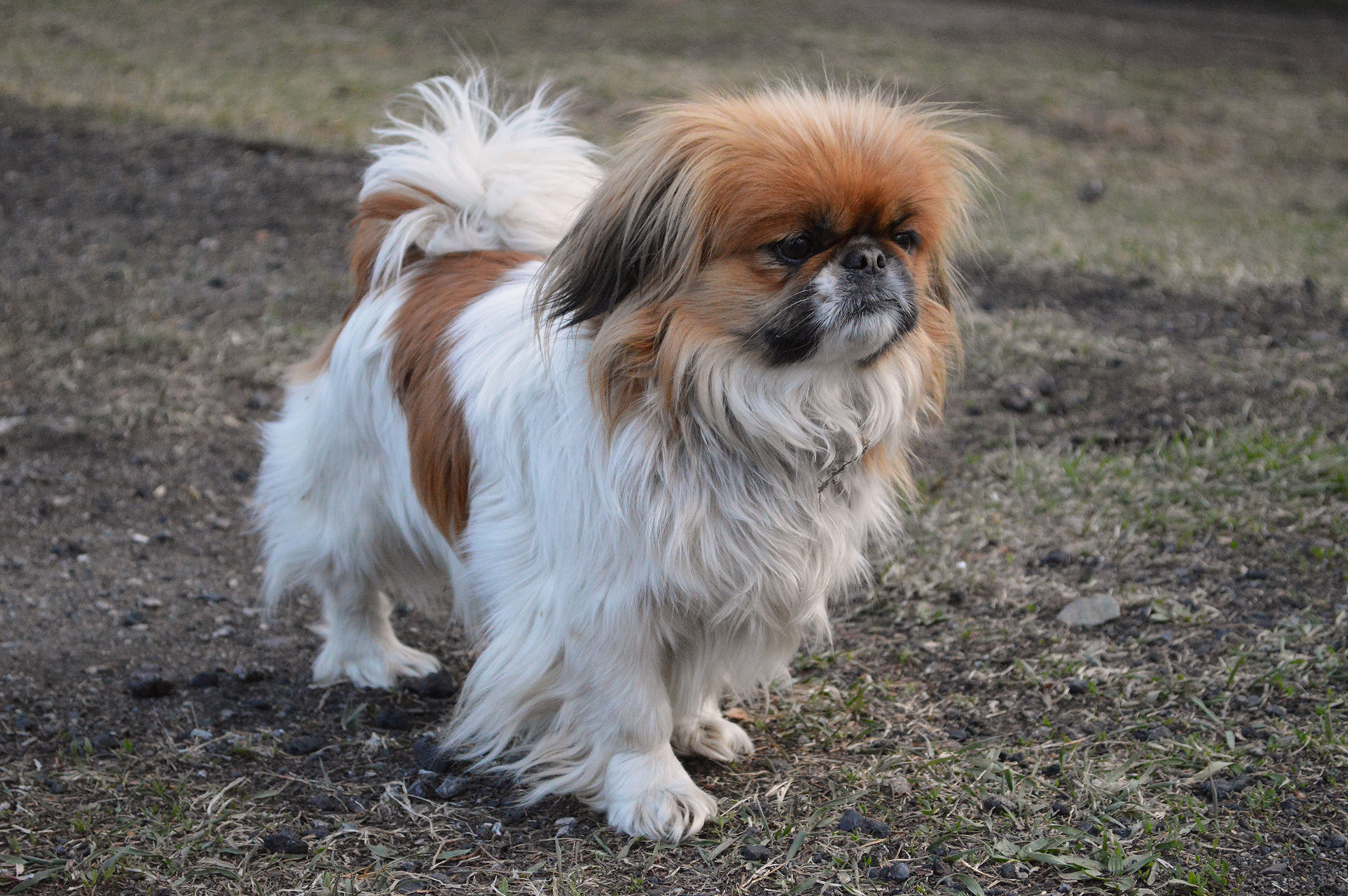Pekingese

Description
The Pekingese is a small and regal toy breed, known for its lion-like appearance, luxurious coat, and dignified personality. With its roots deeply embedded in Chinese history, the Pekingese is a breed that symbolizes nobility and reverence. Typically weighing between 7 to 14 pounds and standing 6 to 9 inches tall, the Pekingese has a compact yet sturdy build. Its distinct features include a flat face, large round eyes, a broad chest, and a mane-like ruff of fur that gives it a majestic, almost lion-like presence.
The breed’s long, flowing double coat is most commonly seen in shades of gold, fawn, or sable, but it can also appear in black, white, and a variety of other colors. Maintaining this luxurious coat requires regular grooming to prevent matting and to keep the Pekingese looking its best. The breed’s proud, rolling gait adds to its distinctive charm, reflecting its self-assured and independent nature.
Pekingese are affectionate and loyal dogs, forming strong bonds with their families. While they can be playful and engaging, they are equally content to spend their time lounging and observing their surroundings with a dignified air. Despite their small size, Pekingese are known for their bravery and will not hesitate to defend themselves or their loved ones, earning them a reputation for being fearless and protective.
While their demeanor can appear aloof to strangers, Pekingese are loving and devoted to their families, making them excellent companions. They adapt well to apartment living and require only moderate exercise, but they benefit from daily walks and interactive play to keep them mentally stimulated. Their intelligence and independent streak make training a unique experience, often requiring patience and positive reinforcement.
Overall, the Pekingese is a breed that combines elegance, loyalty, and a touch of ancient history. Its unique appearance and charming personality have made it a beloved companion for centuries, and it continues to captivate dog lovers with its timeless allure.
History
The history of the Pekingese is steeped in ancient Chinese tradition and mysticism, tracing back over 2,000 years to the Tang Dynasty (618–907 AD). Revered as sacred companions, Pekingese were bred by Chinese royalty and played a significant role in the cultural and spiritual life of the imperial court. According to legend, the breed originated when a lion fell in love with a marmoset, and the Buddha granted their union by creating a lion-like dog with the size and demeanor of the marmoset. This mythology underscores the breed’s resemblance to a lion, which symbolizes strength and power in Chinese culture.
Pekingese were exclusively owned by the Chinese imperial family and were considered so precious that commoners were forbidden to own or even touch them. These small, lion-like dogs were often carried in the sleeves of the emperor’s robes or paraded during grand ceremonies, cementing their status as symbols of wealth and divinity. They were deeply intertwined with religious practices, often regarded as spiritual protectors capable of warding off evil spirits.
The breed remained a closely guarded treasure in China until the mid-19th century. During the Second Opium War in 1860, British and French forces invaded the Imperial Palace in Beijing. After the defeat of the Qing Dynasty, five Pekingese dogs were discovered among the spoils and brought back to England as gifts for Queen Victoria and other aristocrats. These dogs became the foundation for the breed’s introduction to the Western world, where their exotic appearance and royal lineage captivated dog enthusiasts.
In the decades that followed, the Pekingese gained popularity in Europe and North America, especially among the elite. The breed was officially recognized by the American Kennel Club (AKC) in 1906. Breeders worked diligently to preserve the Pekingese's distinctive traits, ensuring that its rich heritage and noble appearance remained intact.
Today, the Pekingese continues to be cherished for its regal demeanor, unique looks, and historical significance. Its journey from the palaces of ancient China to the homes of modern dog lovers reflects its enduring appeal and its place as a symbol of both elegance and cultural legacy.
Colors
• Biscuit
• Black
• Black & Tan
• Cream
• Fawn
• Fawn Brindle
• Fawn Sable
• Gray
• Gray Sable
• Light Red
• Red
• Red Brindle
• Red Sable
• White


